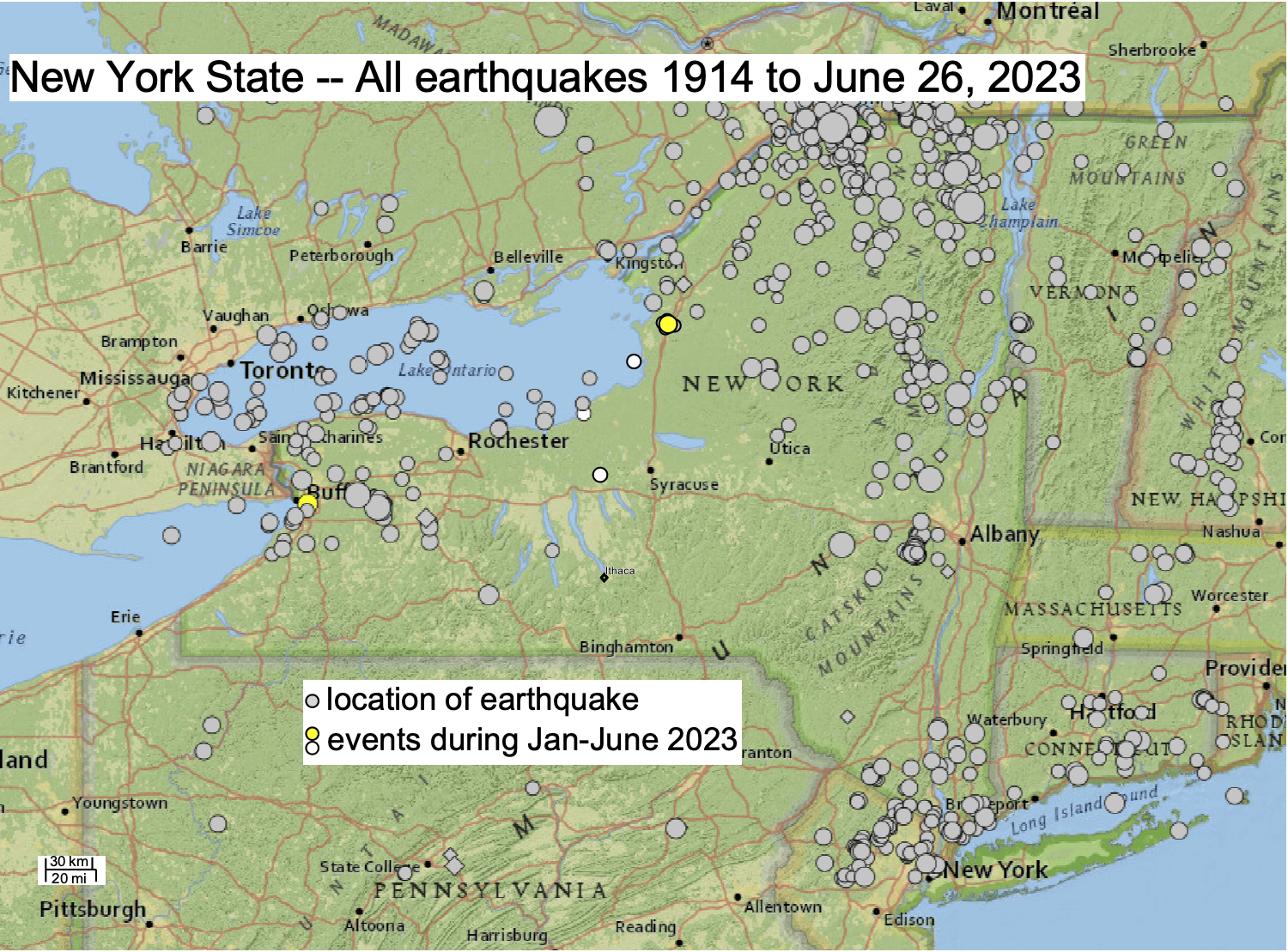**Earthquake Hazards in New York Tri-State Area** Recent studies have shed light on the earthquake hazards facing the New York metropolitan area. Here's what we know: **Past Earthquakes Provide Clues** Historical records show that the Northeast has experienced earthquakes in the past, including: * A magnitude 3.8 earthquake in Buffalo in 1988 * A magnitude 4.0 earthquake in New Jersey in 2018 **Fault Lines in the Region** The Ramapo Fault Zone, located in Rockland County, New York and northern New Jersey, is a potential source of earthquakes in the area. **Quaternary Faults in Western New York** Quaternary faults, those that have been active in the past 2.6 million years, have been identified in western New York, including the Clarendon-Linden fault system. **Assessing Hazard** While major earthquakes are rare in the Northeast, it is important to understand the potential risks. The location and magnitude of past earthquakes provide valuable information for assessing earthquake hazard. **Prepare for the Unexpected** Residents should be aware of the earthquake hazards in their area and take steps to prepare: * Have an emergency plan in place * Secure heavy objects * Know where to shelter during an earthquake * Stay informed about earthquake preparedness By understanding the earthquake hazards and taking precautions, communities can mitigate the potential risks and protect themselves from harm.
**Earthquake Hazards in New York Tri-State Area** Recent studies have shed light on the earthquake hazards facing the New York metropolitan area. Here's what we know: **Past Earthquakes Provide Clues** Historical records show that the Northeast has experienced earthquakes in the past, including: * A magnitude 3.8 earthquake in Buffalo in 1988 * A magnitude 4.0 earthquake in New Jersey in 2018 **Fault Lines in the Region** The Ramapo Fault Zone, located in Rockland County, New York and northern New Jersey, is a potential source of earthquakes in the area. **Quaternary Faults in Western New York** Quaternary faults, those that have been active in the past 2.6 million years, have been identified in western New York, including the Clarendon-Linden fault system. **Assessing Hazard** While major earthquakes are rare in the Northeast, it is important to understand the potential risks. The location and magnitude of past earthquakes provide valuable information for assessing earthquake hazard. **Prepare for the Unexpected** Residents should be aware of the earthquake hazards in their area and take steps to prepare: * Have an emergency plan in place * Secure heavy objects * Know where to shelter during an earthquake * Stay informed about earthquake preparedness By understanding the earthquake hazards and taking precautions, communities can mitigate the potential risks and protect themselves from harm.
**New York State Experiences Strongest Earthquake in 40 Years** New York State has a long history of earthquakes, with over 550 recorded since the 18th century. While most are minor, the state has experienced several significant events, including a magnitude 5.8 earthquake in 2011 that was felt throughout the eastern United States. On Monday, August 23, 2021, a 3.8-magnitude earthquake struck near Buffalo, New York, making it the strongest earthquake recorded in the area in four decades. The earthquake was widely felt across Western New York and parts of Pennsylvania. According to the United States Geological Survey (USGS), the earthquake occurred at a depth of about 3 miles and was centered about 10 miles southwest of Buffalo. There were no reports of significant damage or injuries. The USGS notes that New York City and its surrounding areas are also at risk for earthquakes. While the region has experienced relatively few earthquakes in recent years, there have been several significant events in the past, including a magnitude 4.9 earthquake in 2009. The USGS recommends that all residents of New York State be prepared for earthquakes by taking steps such as securing heavy objects, storing food and water, and developing an emergency plan.

Deep Geothermal Heat Research Cornell University
**Massive Earthquake Shakes New York City, Largest in 140 Years** New York City has been jolted by a magnitude 4.8 earthquake, the strongest to hit the area in over a century. The quake struck on Friday morning, shaking portions of New Jersey and New York City. The earthquake occurred in 1884 and had an estimated magnitude of 5.4. The city's mayor's office released a statement on social media, indicating that assessments are still underway to determine the extent of the damage. According to experts, New York City remains a low-risk area for earthquakes. However, residents are advised to be prepared for any seismic activity and follow appropriate safety protocols. "These earthquake preparedness flyers are a helpful introduction for residents new to the area," state officials mentioned. The earthquake has caused minimal damage, with no reports of serious injuries or major structural collapse. However, some buildings have experienced minor cracks and broken windows. Authorities are urging residents to remain calm and follow official safety guidelines, which include: * Staying indoors and away from windows * Identifying safe places to take cover, such as under sturdy tables or in interior hallways * Being prepared for aftershocks The New York City Office of Emergency Management has released additional information and resources for residents on its website.
WEB In 2022 the Turkish Disaster Emergency Management Authority documented over 20. WEB In the early morning hours of Feb 6 an earthquake of 78 magnitude struck southern Turkey near the border. WEB On February 06 2023 at 117 UTC a magnitude 78 earthquake struck south-central Türkiye near the Syrian border. WEB By Pablo Robles Agnes Chang Josh Holder Lauren Leatherby Scott Reinhard and Ashley Wu Updated. WEB By Leanne Abraham Henry Fountain and KK..

Comments